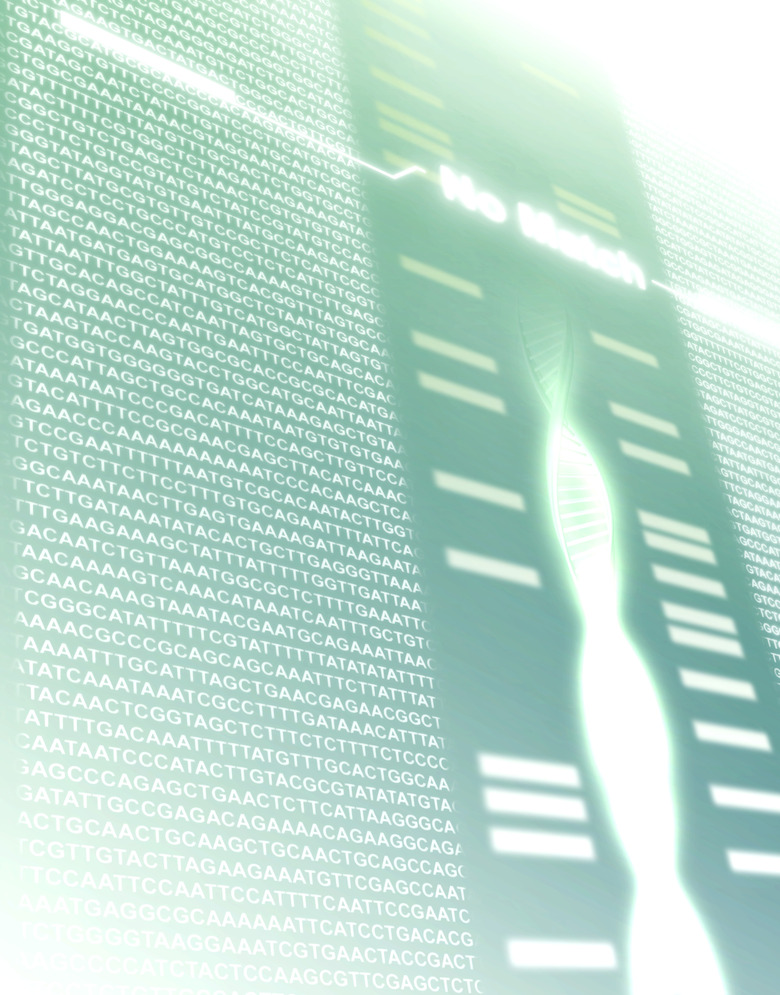Why Is DNA The Blueprint Of Life?
Every living organism depends upon its proteins for its existence. In many organisms, proteins form the very structure of the living creature, but even in plants — where the structures are built more from sugars — proteins perform the functions that allow an organism to live.
Each type of organism, and each organ within a complex organism, is defined by the proteins of which it is composed. So whatever organizes the proteins in a living being is providing the blueprint for building that organism.
So: what is the blueprint of life definition? It's DNA. DNA provides the blueprint in biology for information for building all the proteins within every living thing on Earth.
Blueprint in Biology: DNA Structure
Blueprint in Biology: DNA Structure
To give the blueprint of life definition, we need to start with the structure of that blueprint. DNA is a long, double stranded molecule that consists of two single molecular chains wrapped around each other. Each strand consists of a series of bases connected to each other through a backbone of sugar molecules.
There are four different bases: adenine, guanine, cytosine and thymine. They are very frequently referred to simply by their first initials: A, G, C and T.
The order of those bases on a strand of DNA is called the sequence. The sequence on one strand of DNA is matched by a complementary sequence on its opposite, matched strand. A is matched with T and C is matched with G. So where one strand of DNA has a CAATGC, the other will have a GTTACG.
Reading the DNA Blueprint of Life
Reading the DNA Blueprint of Life
The normal double-stranded DNA molecule is wrapped around itself in such a way that the sequence is inaccessible. That is, the bases are protected from chemical interactions. The first step in producing a protein from DNA is to unwrap the double strand. A molecule called RNA Polymerase grabs on to the double-stranded DNA and splits it apart, just at one spot.
It then "reads" the base that is exposed and builds another long stranded molecule, RNA. RNA is very similar to DNA except in a couple respects. First, it is a single-stranded molecule. Second, it uses uracil, U, instead of thymine, T. So RNA polymerase builds a strand of RNA that complements the DNA. A DNA sequence of CGGATACTA would get transcribed into an RNA strand of GCCUAUGAU. When making proteins, the RNA built in this way is called messenger RNA, or mRNA.
mRNA to Protein
mRNA to Protein
Although the details differ depending upon the specific organism, the next step is generally the same for all living creatures. The mRNA connects with a ribosome, which is a complex that acts like a protein factory. The ribosome sets up an assembly line where the sequence of the mRNA is transferred to another construction area where amino acids are put together.
Where the process of building mRNA is a one-to-one code, where one base in DNA leads to one base in RNA, the process of building proteins reads three mRNA bases at a time. The three-letter "codes" in the mRNA refer to specific amino acids. Those amino acids connect up with one another in the order specified by the mRNA, creating proteins.
Complexity of the DNA Blueprint of Life
Complexity of the DNA Blueprint of Life
So the sequence from the DNA gets transferred to mRNA, which then contains the information used to build proteins. There are very complex signals that trigger the beginning and end of the building processes. Everything from the way you feel to the way you digest your food is controlled by the proteins within your cells.
When your body needs more or less of a specific protein, different molecular signals adjust the rate at which the information from DNA is used to build proteins. So, although DNA doesn't make up your bones or help you run, it contains all the information for building the proteins that do those jobs for you, which is why it's called the blueprint of life.
Cite This Article
MLA
Gaughan, Richard. "Why Is DNA The Blueprint Of Life?" sciencing.com, https://www.sciencing.com/dna-blueprint-life-10374/. 31 July 2019.
APA
Gaughan, Richard. (2019, July 31). Why Is DNA The Blueprint Of Life?. sciencing.com. Retrieved from https://www.sciencing.com/dna-blueprint-life-10374/
Chicago
Gaughan, Richard. Why Is DNA The Blueprint Of Life? last modified March 24, 2022. https://www.sciencing.com/dna-blueprint-life-10374/
